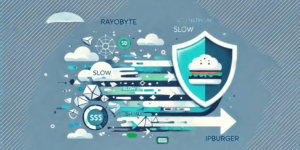Big Data as a Service (BDaaS) is pretty badass. But let’s break it down into smaller parts to understand why you need to know about it.
Big data as a service, or BDaaS, is one of the newer buzzwords in the big data industry. But what does it actually mean? Put simply, BDaaS is a model where big data capabilities are delivered as a service from a third-party provider. This can include anything from data management and warehousing to analytics and machine learning.
In this article, we explore the type of BDaaS, its challenges, and how it transforms businesses into data-driven enterprises.
What is Big Data as a Service?
Big data as a service (BDaaS) is the process of leveraging big data tools and infrastructure in the cloud for developing and deploying big data applications. It is an emerging market that provides big data capabilities as a service, making it faster and easier to get started with big data projects. BDaaS allows enterprises to focus on their business goals and not worry about setting up or managing complex big data infrastructure.
What types of BDaaS are there?
There are three main types of BDaaS: Hadoop as a service, data as a service, and analytics as a service.
Hadoop as a Service (HaaS)–is a big data analytics framework that stores and analyzes data in the cloud. This technology is convenient for users because they do not have to invest in or install additional infrastructure on-premises. Usually, a third-party vendor provides and manages HaaS.
Data as a service (DaaS)–is the process of outsourcing the storage, management, and analysis of data using a public or private cloud.
Analytics as a service (AaaS)–is a software as a service (SaaS) delivery model for analytics. Under this model, a third-party host manages the analytics software and data, making it available to customers over the internet. Customers can access and use the software, typically through a web browser, to perform their own analysis.
The key functions of Big Data as a Service.
BDaaS has a perceivable infinite number of functions, but let’s highlight some of the main ones.
Multiple Functionality Service-oriented Architecture.
Service-oriented architecture (SOA) is a software architecture that enables applications to be split into modular services. Each service is self-contained and has a well-defined interface that other services can access.
A service-oriented architecture allows for the easy reuse of software components, increasing efficiency and agility. It also enables the construction of composite applications, which can aggregate multiple services into a single application.
Capabilities of Cloud Virtualisation.
Cloud virtualization can change how businesses operate. This makes it possible to instantiate new services in response to demand and configure and reconfigure services. The use of cloud virtualization can help organizations improve their service delivery while reducing costs.
Facilitating Business Intelligence.
The principal purpose of Business Intelligence is to improve the understanding and facilitate decision-making for issues that affect an organization’s performance. BI is also instrumental in detecting patterns and correlations hidden in data, meaning that businesses can optimize performance by predicting future outcomes and trends.
Even-driven Processing.
Even-driven processing is a computer science term that describes an algorithm that guarantees that the output will be produced in the same order as the input. This type of algorithm is also referred to as a “cause-and-effect” or “order-preserving” algorithm. Even-driven processing is used in many applications, including sorting and searching.
Five things you need to know about Big Data As A Service.
1. It can help you make data-driven decisions
Big data as a service can help you to make better data-driven decisions by allowing you to store, manage and analyze large amounts of data quickly and easily. This can help you target customers more effectively, track marketing campaigns, and improve your business operations.
2. It can improve your customer engagement
You can also use big data as a service to improve customer engagement by helping you to understand customer needs and preferences. This can allow you to create targeted marketing campaigns that are more likely to be successful in attracting and retaining customers.
3. It can reduce costs
Big data as a service can also help to reduce costs by providing an efficient way to store and process large amounts of data. This can help you optimize your business operations and make more efficient use of your resources.
4. It is scalable
One of the advantages of big data as a service is that it is scalable, meaning that it can grow or shrink depending on your needs. This can provide flexibility for businesses unsure of how much big data storage they will need.
5. It is secure
You must securely store big data as with any other data type to prevent unauthorized access. Big data as service providers are responsible for ensuring that your data is safe and secure, giving you peace of mind.
The benefits of Big Data as a Service.
The benefits of BDaaS are manifold.
- First, it removes the burden of building and maintaining big data infrastructure in-house.
- Second, it provides enterprises with access to big data analytics expertise and tools that they may not have in-house.
- Third, it allows enterprises to tap into a large pool of big data talent, which can be challenging and expensive to hire.
- Fourth, it enables enterprises to quickly and easily experiment with different big data analytics workloads and platforms.
- Fifth, it helps enterprises reduce the risk of investing in new big data analytics technologies and platforms.
- Sixth, it can help enterprises understand their big data analytics needs and requirements better.
- Seventh, it can help enterprises optimize their big data analytics workflows.
- Eighth, it can help enterprises achieve better results from big data analytics initiatives.
What are some of the challenges?
When it comes to big data, there are a few key challenges that we need to address:
- Collection: Collecting data from various sources is difficult and time-consuming.
- Storage: Storing all that data can be costly and challenging.
- Analysis: Analyzing all that data to find trends and patterns can be daunting.
- Deployment: Deploying big data solutions can be difficult and expensive.
How to get started with Big Data As A Service
There are several important factors to consider when beginning with Big Data As A Service. For instance, the first is deciding which tasks you need to outsource and which tasks you can do in-house.
Generally, hiring third-party providers for data storage and management is much more effective than installing and maintaining powerful servers single-handedly. In short–it’s just not efficient. However, when it comes to collecting data, you have options.
Browser Scrapers
Web scrapers in the form of browser extensions aren’t exactly known for delivering massive amounts of data, but they’re free to use and satisfy basic scraping needs. This means that you eventually need to upgrade to something more scalable.
Open-Source Scripts
There are hundreds of scraping systems that are free to use if you have the skills. You can get all the data your heart desires using your command prompts and a headless browser. It’s a lot of work, though. You need to figure out what kind of programming language you need to use, the optimal way to collect data, and how to organize it for future use.
Web Scraping APIs
If you want a mostly hands-off data collection tool, your best bet is to employ a third-party web scraping service. Your only effort comes from figuring out what data you want to extract and what format you want it.
Proxies for big data.
If you decide on harvesting your own data through web scraping tools, it won’t be long before you run into problems with IP bans. It’s simple, really–websites don’t like automated activity. When you send requests for information from a web scraping tool, the target website picks up on it and labels your behavior as threatening.
The easiest way to avoid this mixup is to send requests from separate residential IP addresses using proxy rotation.


